Isabela Island Galapagos: Ultimate Travel Guide
Isabela Island, the Galápagos’ largest and youngest landmass, is a realm of fire and life. Born from six shield volcanoes—including the colossal Sierra Negra—its dramatic landscapes span fiery calderas, lush mangroves, and pink sand beaches. Puerto Villamil, its laid-back coastal hub, offers access to wildlife wonders while the haunting Wall of Tears stands as a stark reminder of its penal colony history.
A UNESCO World Heritage Site, Isabela balances ecological revival with adventure. Once scarred by invasive species, it now thrives as a conservation triumph, showcased by its Giant Tortoise Breeding Center and restored habitats. Hike volcanic trails, snorkel lava arches, or kayak with sea lions, and witness an island where raw geological power meets thriving biodiversity.
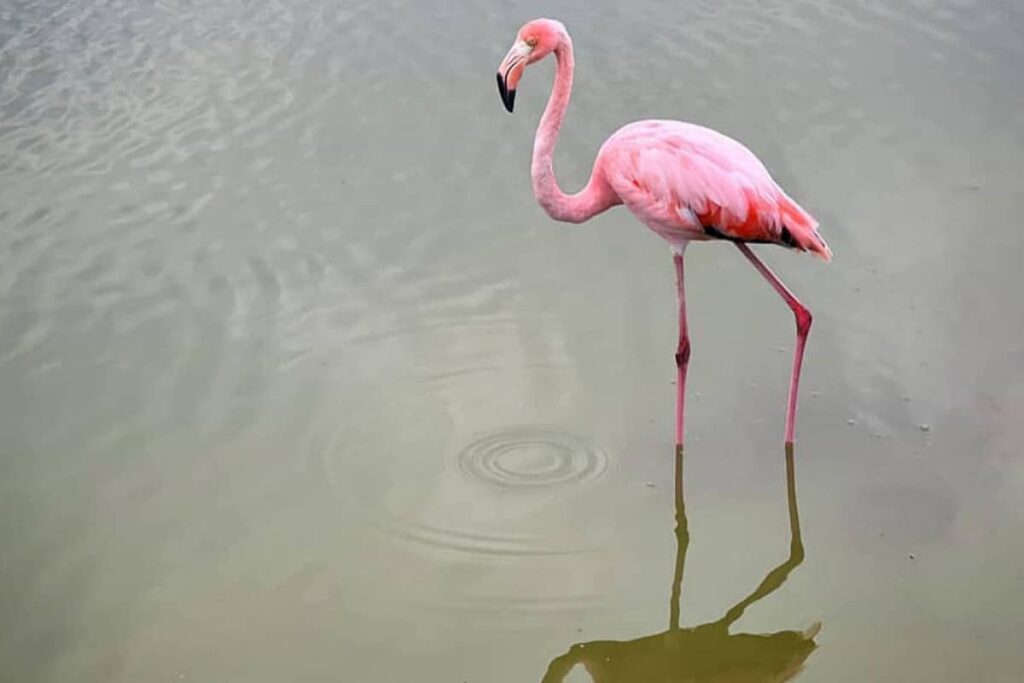
Isabela Fast Facts
- Youngest & Largest Island: Formed by 6 shield volcanoes, including Sierra Negra (one of the world’s largest calderas).
- Home to Puerto Villamil, the island’s charming coastal town with pink sand beaches.
- Wildlife Sanctuary: Hosts the Galapagos tortoise breeding center.
- Site of the Wall of Tears, built by prisoners in the 1940s penal colony.
- UNESCO World Heritage Site: Protected for its unique ecosystems.
Isabela Activity Highlights
- Sierra Negra Volcano Hike: Trek the rim of an active volcano.
- Tintoreras Islet Kayaking: Spot sharks and penguins.
- Snorkel Los Tuneles: Swim through lava arches with sea turtles.
- Flamingo Lagoon Birdwatching: Photograph pink flamingos.
- Wall of Tears History Tour: Explore the island’s dark past.
- Giant Tortoise Breeding Center Visit: Learn about conservation efforts.
Isabela Animal Highlights
- Galapagos Penguins: Only penguin species north of the equator.
- Blue-Footed Boobies: Nesting sites near Urbina Bay.
- Marine Iguanas: Unique underwater algae-eaters.
- Flightless Cormorants: Rare birds found only here.
- Whale Sharks: Seasonal sightings (June–October).
- Galapagos Sea Lions: Playful beach companions.
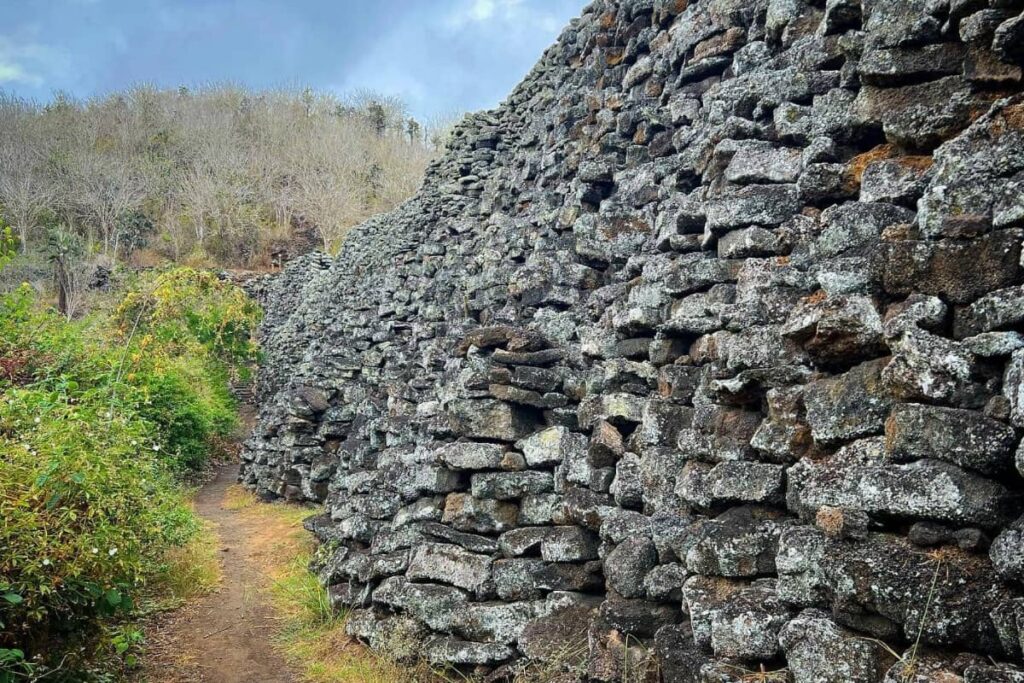
History
Formed approximately 1 million years ago by the merging of six shield volcanoes, its volcanic origins created a rugged landscape of lava fields and craters, fostering unique ecosystems. By the 17th century, the island became a refuge for pirates and buccaneers, who used its freshwater sources and sheltered coves during raids on Spanish ships. Centuries later, Isabela’s remote terrain took a darker turn when it hosted a penal colony from 1946 to 1959; prisoners endured harsh conditions, constructing the haunting “Wall of Tears,” a stone barrier built under forced labor that still stands as a somber relic. The island’s fate shifted dramatically in the late 20th century, transitioning from exploitation to conservation. Recognized as part of the UNESCO World Heritage Site in 1978, Isabela is now a protected haven for giant tortoises, marine iguanas, and other endemic species, symbolizing the Galápagos Islands' revival as a shining example of ecological preservation and sustainable tourism.
Geography
- Size: 4,640 km² (1,771 mi²)– Largest Galapagos island.
- Highest Peak: Wolf Volcano (1,707m, 5,600 ft), the archipelago’s highest point.
- Unique Ecosystems: Mangrove forests, lava fields, and coral reefs.
Isabela Island Airport
José de Villamil Airport is a small airport that receives flights from Baltra or San Cristobal. If you'd rather not fly, you can take a 2.5-hour ferry from Santa Cruz. Pro tip: Book transfers in advance during peak season (June–August).
Conservation Challenges
Invasive Species: Project Isabela (1997–2006) successfully eradicated goats, donkeys, and pigs that destroyed habitats, but rats, cats, and fire ants still threaten tortoises and birds like the critically endangered mangrove finch. Cattle in southern areas compete with native wildlife for resources.
Mangrove Finch Rescue: With only ~100 individuals left, invasive Philornis flies cause 80% nestling mortality. Conservationists use captive breeding ("head-starting"), insecticide-treated nests, and rat control to boost survival.
Tourism Pressures: Fragile sites like Los Tuneles enforce visitor quotas to protect lava-tunnel ecosystems. Puerto Villamil’s tourism growth (hotels, roads) demands balancing economic benefits with habitat preservation.
Marine Protection: Illegal fishing threatens sharks and marine life in the Galápagos Marine Reserve. Limited patrol resources and the reserve’s vast size (133,000 km²/51352 mi²) challenge enforcement, though satellite tech and NGO partnerships aid surveillance.
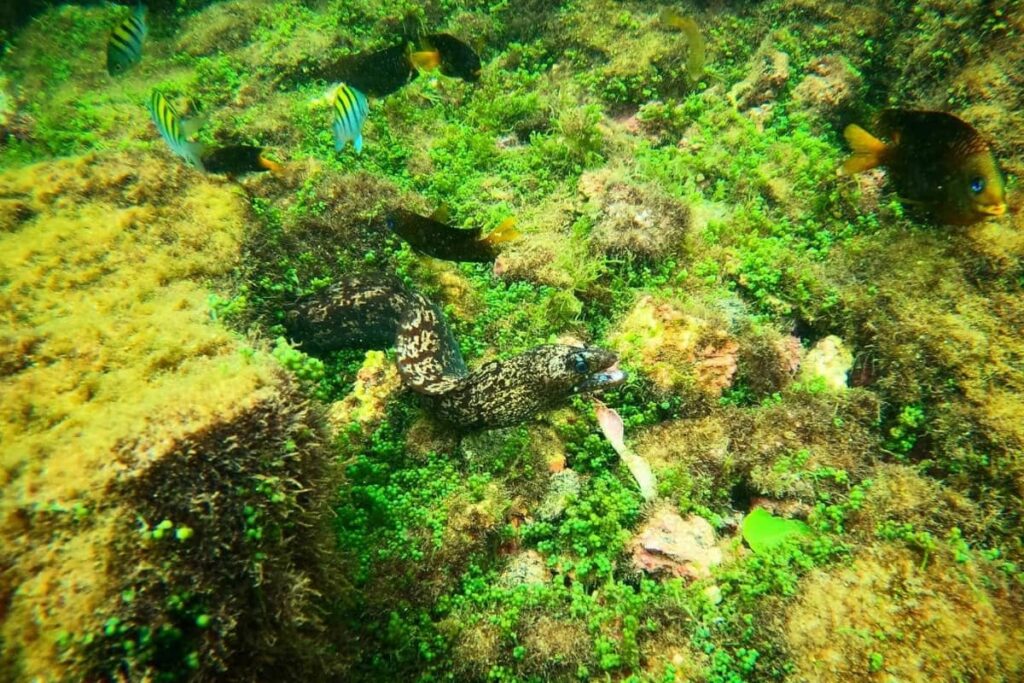
Economy
Fishing & Agriculture:
Isabela exports spiny lobster to global markets and produces organic coffee in its highlands, adhering to sustainable practices like seasonal fishing bans and agroforestry.
Tourism:
Tourism employs 85% of locals, centered on guided volcano hikes, snorkeling trips, and wildlife tours.
Handicrafts:
Artisans craft lava-stone jewelry and tortoise-themed souvenirs, sold in Puerto Villamil’s shops. These eco-friendly products provide local income while celebrating the island’s volcanic landscapes and iconic biodiversity.
Climate
When to visit:
Dry Season (June–November):
Temperatures average 21–24°C (70–75°F), with minimal rainfall (13–25 mm or 0.5–1 inch/month ) and cool breezes. Overcast skies and garúa (mist) frequent the highlands.
Wet Season (December–May):
Warmer temps (27–29°C/80–85°F ) and higher rainfall (51–76 mm or 2–3 inches/month) bring lush greenery and calm, clear seas. Sunny mornings and brief afternoon showers are typical in this season.
How to Visit Isabela Island
Two popular options:
- Luxury Cruises: All-inclusive itineraries with expert guides. Ready to book today? How about looking at some last minute deals?
- Island Hopping: Prefer to stay (mostly) on land? Customize your once-in-a-lifetime adventure with us!
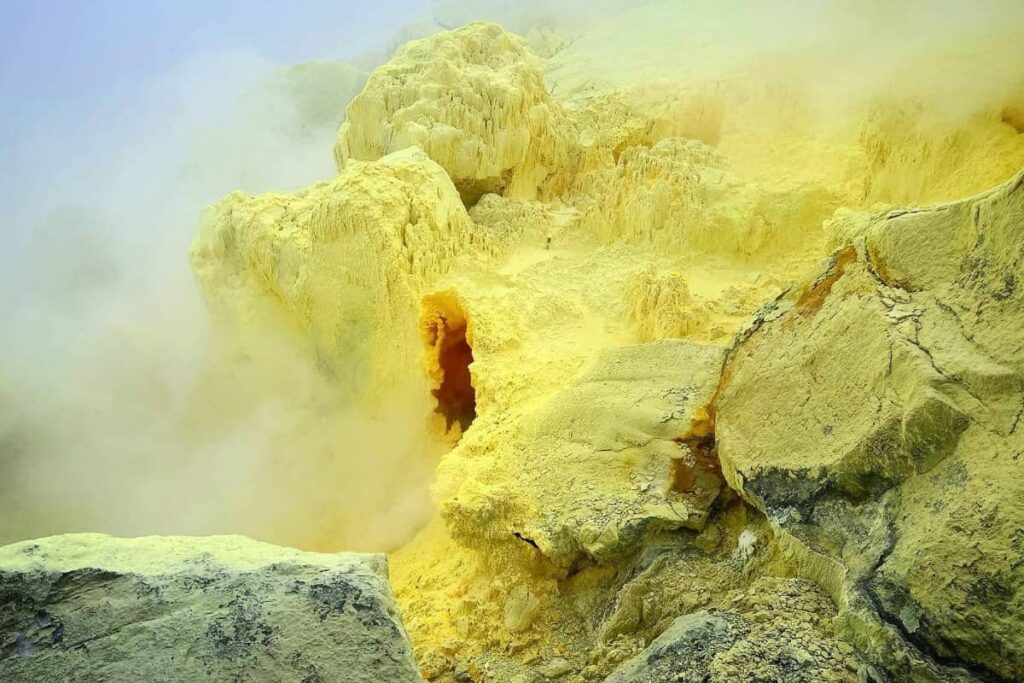
Activities & Experiences
Sierra Negra Volcano Hike
Trek the moon-like terrain of one of the largest calderas in the world.
Snorkeling at Tintoreras Islet
Swim with white-tipped reef sharks (Triaenodon obesus) and Galapagos penguins (Spheniscus mendiculus).
Kayaking in Elizabeth Bay
Paddle mangrove forests to spot marine iguanas (Amblyrhynchus cristatus).
Whale Watching in Bolívar Channel
Spot humpback whales (Megaptera novaeangliae) June–October.
Los Tuneles Snorkeling
Explore lava arches with seahorses (Hippocampus ingens).
Giant Tortoise Breeding Center Tour
Meet endangered Isabela tortoises (Chelonoidis becki).
Horseback Riding to Volcán Chico
Ride through sulfur vents and lunar landscapes.
Scuba Diving at Cape Marshall
Dive with hammerhead sharks (Sphyrna lewini).
Urbina Bay Uplift Hike
Explore a coral reef lifted 4 meters above sea level in 1954.
Punta Moreno Tide Pools
Wade through lava-formed pools teeming with octopuses and starfish.
Pink Sand Beach Relaxation
Unwind on Puerto Villamil’s rare pink sand beaches.
Fishing with Local Guides
Catch red snapper and learn to cook Galapagos ceviche.
Sunset at Concha de Perla
Swim in tranquil bays followed by grilled lobster dinners.
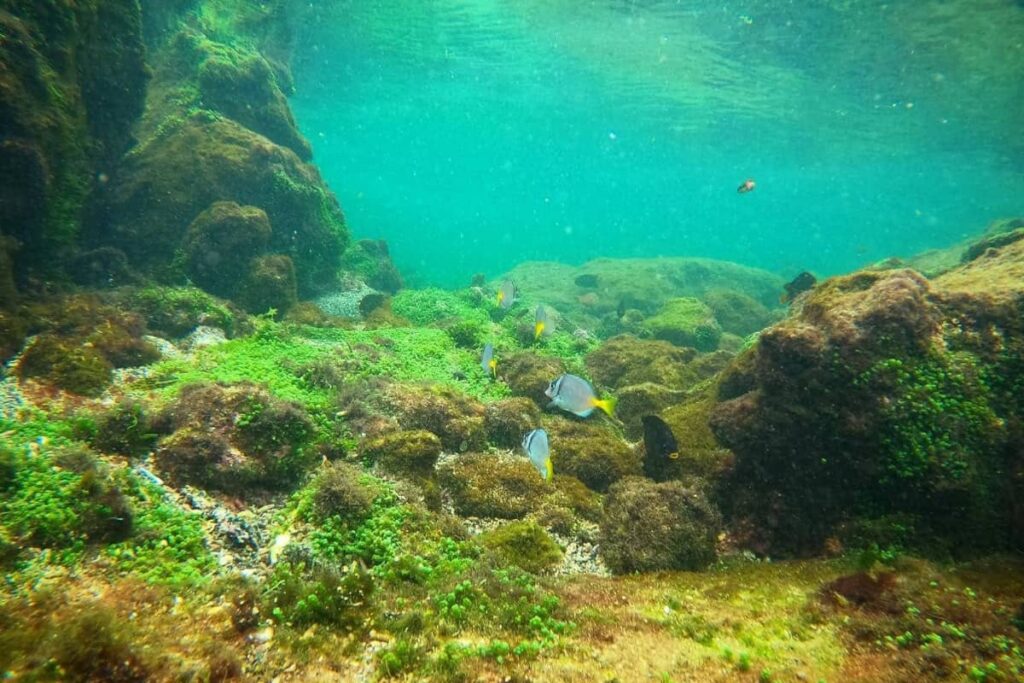
Animal Encounters
Mammals
- Galapagos Sea Lion (Zalophus wollebaeki): Playful snorkeling companions.
- Galapagos Fur Seal (Arctocephalus galapagoensis): Rest on shaded lava rocks.
- Bottlenose Dolphin (Tursiops truncatus): Leap near boats in Bolívar Channel.
- Sperm Whale (Physeter macrocephalus): Spotted December–April.
- Rice Rat (Aegialomys galapagoensis): Endemic nocturnal rodent.
Reptiles
- Marine Iguana (Amblyrhynchus cristatus): Salt-sneezing algae-eaters.
- Land Iguana (Conolophus subcristatus): Bright yellow giants near Urbina Bay.
- Galapagos Giant Tortoise (Chelonoidis nigra): Roam Alcedo Volcano highlands.
- Lava Lizard (Microlophus albemarlensis): Dart across Sierra Negra trails.
- Green Sea Turtle (Chelonia mydas): Nest on Isabela’s beaches.
Birds
- Blue-Footed Booby (Sula nebouxii): Famous for clownish mating dances.
- Flightless Cormorant (Phalacrocorax harrisi): Endemic underwater hunters.
- Galapagos Penguin (Spheniscus mendiculus): Nest in lava crevices.
- Waved Albatross (Phoebastria irrorata): Glide over Punta Albemarle.
- Darwin’s Finch (Geospiza magnirostris): Critical to evolutionary studies.
Fish & Underwater Life
- Hammerhead Shark (Sphyrna lewini): Schools at Cape Marshall.
- Golden Ray (Rhinoptera steindachneri): Glide through Elizabeth Bay.
- King Angelfish (Holacanthus passer): Vivid reef dwellers.
- Pacific Seahorse (Hippocampus ingens): Camouflaged in seagrass.
- Moorish Idol (Zanclus cornutus): Striking black-and-white snorkeling favorite.
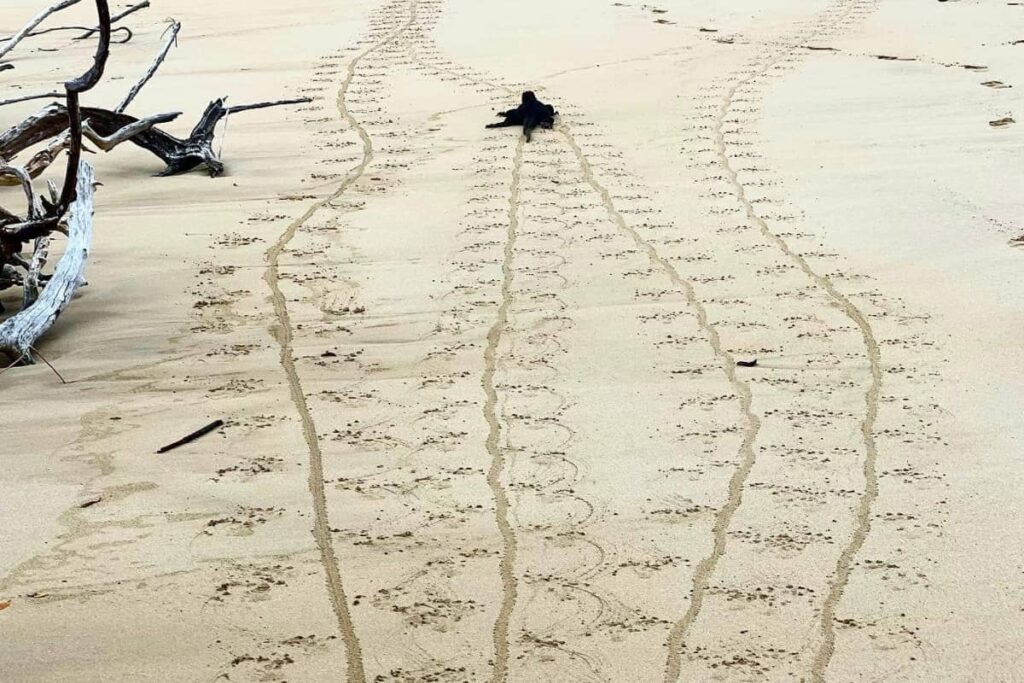
Travel Tips and Practical Information
- Entry Requirements: Valid passport with 6 months of validity, return ticket, Transit control card (TCT) ($20), and Galapagos National Park Entrance Fee ($200 for foreign travelers over age 12).
- Quick-dry clothing, reef-safe sunscreen, a waterproof phone case and motion sickness tablets.
- No ATMs on Isabela—bring USD to Puerto Villamil.
- Respect wildlife: Stay 2 meters from animals.
- Book ferries and flights months in advance for peak season.
Start Planning Your Isabela Adventure – Browse cruises and land-based tours Now!
Featured Image Credit - Arsa Longa

